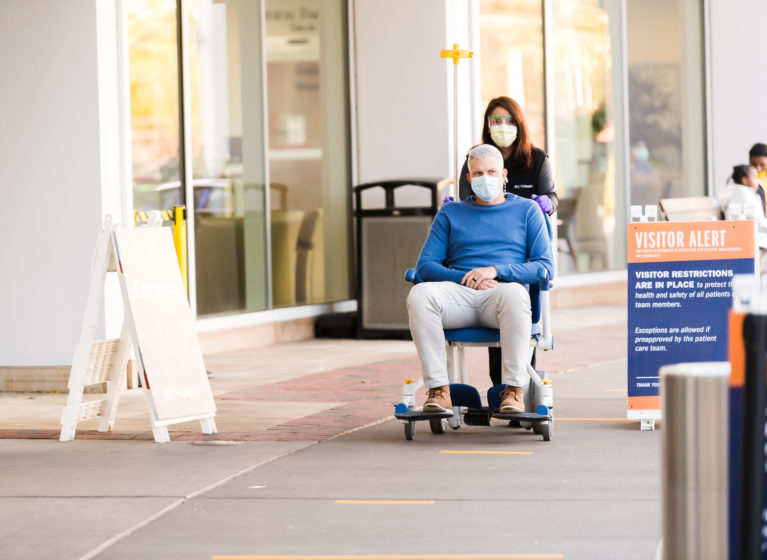
At a busy academic medical center like ours, whose services are consistently in high demand, we can provide our many patients the best care possible by ensuring they are safely discharged without unnecessary delay. That's why improving patient progression is among our top goals for the year. It's also why we're piloting a promising program bringing our care teams together around what their patients need to continue their recovery either at home or at a location most suited to their needs.
Shortening the average overall length of stay for our patients became a more pronounced need for the Medical Center during the early peak of the COVID-19 pandemic. It was harder to discharge some patients — especially those who were medically ready to leave us but still required additional recovery care — because many of the skilled nursing and acute rehab facilities we typically transferred to were experiencing outbreaks, short-staffed, or otherwise not taking new patients due to safety concerns. This situation made it harder for us to accommodate all the other streams of patients who needed our services, from the rising number of Emergency Department visits to those awaiting critical operations to those transferring in to receive our expert care from community hospitals.
Eventually, that early COVID wave passed, and we were able to resume discharging patients to skilled nursing and acute rehab facilities. Still, the demand for our services remains high. And, as many of our team members know firsthand, this has been a significant stressor, both physically and mentally. So anything we can do to create a more efficient flow of work through our system so that there aren't bottlenecks and backlogs helps everyone involved, from patient to caregiver.
We've already introduced some efforts to improve patient progression at the Medical Center, some of which you can read more about in the Bridge Plan. Examples include a ride-sharing partnership to help patients needing transportation to discharge and a program to discharge patients needing interim housing to a local hotel. And our ambulatory team plays an important role in patient progression via the Enhanced Recovery After Surgery Program — which helps better prepare patients for surgery, making them more comfortable throughout their perioperative experience and helping them go home sooner to return to a normal life. But among the most unique innovations that we're currently piloting is something called "structured interdisciplinary rounds." This short training video — including interviews with Dr. Paul Helgerson, Associate Chief Medical Officer for Acute Care, and Dr. George Hoke, Associate Professor of Internal Medicine — is a great resource to learn more. The video also features two examples of what this process looks like in practice.
In short, though, these rounds gather all the relevant people to a patient's care to discuss their combined plan of action in a highly structured way. This conversation typically includes an attending physician, pharmacist, case manager, social worker, resident, unit manager, and RN. Together, they talk through the following:
- Overview of the patient and any clinical updates
- Goals for the day and any unmet goals from yesterday
- Expected discharge date — i.e., the earliest date of medical readiness
- Where the patient is to be discharged — i.e., home, home with care, skilled nursing faculty, rehab center, etc.
- Any key quality determinants — i.e., is a urinary catheter or central line needed, can the patient be safely mobilized, etc.
Essentially, this is an organized process to overcome all of the barriers that can keep our teams from the good and robust communication needed to provide the best care, mostly because they often aren't in the same physical spaces or have the same schedules. And these rounds are showing promising signs of making a difference in patient progression. Still, there's more work ahead to really improve their overall impact on the Medical Center. That's why we're starting this pilot in General Medicine and honing our approach before rolling it out to other areas.
What I appreciate most about this effort to improve our patient progression, in particular, is that it allows all of us to work more closely together with one common purpose. It's about taking care of the whole patient, medically and otherwise, so they can leave our doors feeling healthy and supported. When that happens, there's no limit to the good we can do for our patients, community, and one another.
Take care and be well!
Wendy